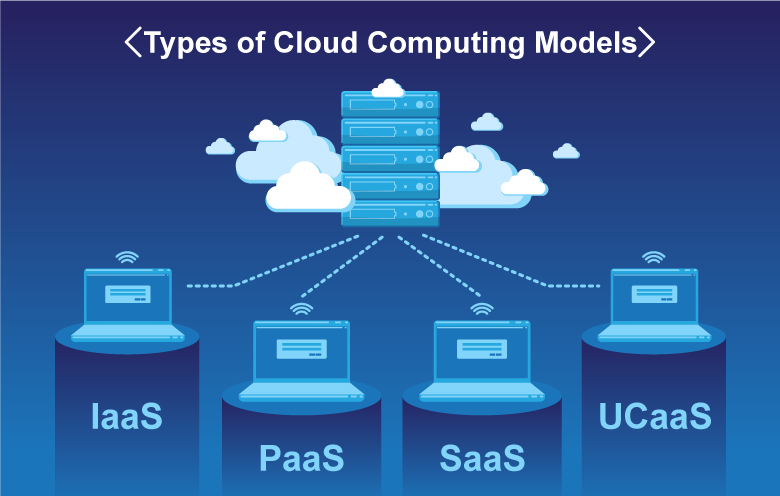Newest Cloud Services Press Release: Innovations and Market Updates
Newest Cloud Services Press Release: Innovations and Market Updates
Blog Article
Achieve Seamless Scalability With Cloud Provider
In the ever-evolving landscape of cloud services, attaining seamless scalability stands as a foundation for modern businesses seeking to stay versatile and affordable. The quest for seamless scalability with cloud solutions introduces a world of possibilities for those prepared to accept the transformative power of vibrant resource management.
Advantages of Cloud Scalability
Cloud scalability uses organizations the flexibility to dynamically adjust sources based upon need, guaranteeing optimum performance and price performance. One essential benefit is the capability to scale resources up or down promptly in response to varying workloads. This agility allows organizations to fulfill changing client demands without over-provisioning sources, inevitably leading to set you back financial savings. Scalability additionally boosts performance by making certain that systems can deal with boosted web traffic or work without experiencing downtime or slowdowns. By efficiently designating resources, companies can maintain high degrees of efficiency throughout peak times without unneeded expenses during quieter durations. In addition, cloud scalability promotes development and experimentation by permitting businesses to easily examine originalities and range them as required. This flexibility encourages a culture of constant enhancement and adaptation, enabling organizations to stay affordable in a rapidly advancing market landscape. Eventually, the advantages of cloud scalability extend past cost savings to incorporate improved performance, dexterity, and innovation.
Trick Attributes for Scaling
Reliable scaling in cloud services relies upon vital functions that enable companies to adjust resources dynamically based on demand. One important attribute for scaling is elasticity, permitting resources to scale up or down in action to fluctuating work. This guarantees that companies can meet performance needs without over-provisioning resources. One more vital function is scalability, allowing systems to take care of increased workload by including resources flawlessly. This feature is vital for accommodating development without jeopardizing efficiency. In addition, automation plays an important duty in scaling by automating the provisioning and de-provisioning of sources based upon predefined policies. Automation reduces human intervention, improves effectiveness, and makes certain fast feedback to transforming demands. Tracking and analytics devices are also important for scaling, supplying insights right into resource utilization, efficiency metrics, and potential bottlenecks. These devices make it possible for companies to make informed choices and optimize resource appropriation for effective scaling. In general, these essential functions jointly encourage companies to accomplish smooth scalability in cloud solutions.
Applying Auto-Scaling Methods
To efficiently optimize source appropriation and adapt to differing work, organizations must strategically apply auto-scaling techniques in their cloud solutions facilities. Auto-scaling allows systems to automatically adjust the variety of compute sources based upon real-time need. There are different auto-scaling strategies that companies can use, such as anticipating scaling, which utilizes historic data to forecast future source requirements, and reactive scaling, which replies to existing work adjustments.

Best Practices for Scalability
For organizations aiming to boost their scalability in cloud services, applying best techniques is important for optimal efficiency and resource monitoring. One secret best technique is developing applications with a microservices style. This method breaks down applications right into smaller, independent solutions that can be deployed, updated, and scaled individually, permitting better flexibility and scalability.
One more crucial technique is using containerization technology, such as Docker or Kubernetes. Containers enable the product packaging of applications and their reliances right into isolated systems, making it easier to scale components individually and deploy them consistently across different environments.
In addition, implementing automated deployment and infrastructure as code (IaC) can streamline scalability efforts (linkdaddy i was reading this cloud services). Automation tools like Terraform or Ansible assistance in provisioning and handling sources effectively, reducing hands-on mistakes and making it possible for rapid scalability
Moreover, monitoring efficiency metrics, setting up alerts, and carrying out routine ability preparation are crucial practices to make certain proactive scalability management. By sticking to these finest techniques, organizations can accomplish seamless scalability in their cloud services while optimizing performance and source use.
Monitoring Performance Metrics
When evaluating the efficiency of cloud solutions scalability, very closely keeping an eye on efficiency metrics is necessary for making certain optimum functionality and resource allotment. By continually tracking crucial performance indicators (KPIs) such as response times, source, throughput, and latency utilization, organizations can gain beneficial insights into the wellness and performance of their cloud framework. Checking performance metrics enables the early detection of prospective bottlenecks or issues that can impact scalability, enabling proactive actions to be taken to resolve them before they escalate.

Final Thought
In verdict, attaining smooth scalability with cloud services is necessary for organizations to maximize performance, improve innovation, and preserve high efficiency levels throughout peak times. By use this link leveraging the benefits of cloud scalability, carrying out auto-scaling methods, using vital features such as elasticity and automation, and adhering to ideal practices like application layout and efficiency surveillance, companies can efficiently scale their systems while making best use of resource hop over to here use and performance.
The mission for smooth scalability with cloud services unveils a globe of opportunities for those eager to welcome the transformative power of dynamic source management.
Cloud scalability offers organizations the versatility to dynamically readjust resources based on demand, guaranteeing optimal efficiency and price efficiency. One more vital feature is scalability, making it possible for systems to manage enhanced workload by adding sources effortlessly.For organizations intending to boost their scalability in cloud solutions, executing finest methods is crucial for ideal performance and resource management.When evaluating the performance of cloud services scalability, closely keeping an eye on performance metrics is imperative for ensuring optimum performance and resource allocation.
Report this page